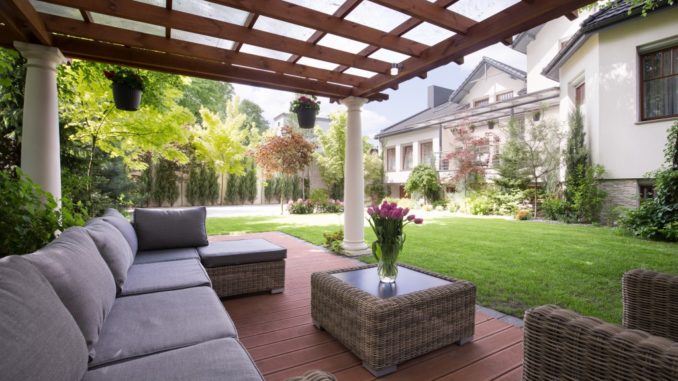
The most popular trend in modern residential areas is outdoor living. Some homeowners erroneously assume that this has negated indoor living. Irrespective of the exceptional designs currently making outdoor spaces and the materials used for their construction, you cannot altogether neglect indoor living spaces. One of the best ideas for your property is to connect your indoor and outdoor spaces. This expands the usable space of your home.
To connect their indoors and outdoors, most people will opt for insulated roofing systems. These panels enhance your indoor and outdoor comfort while lowering your heating and cooling costs in both spaces. With a few design tricks, you can create a seamless transition between these areas, allowing you to enjoy the most of both sides. Here are some of the most effective ways of connecting indoor and outdoor living areas.
Match Your Home’s Architectural Style
When aiming for a seamless indoor-outdoor transition, consider your home’s interior design and architectural style. Aim for the same materials and colors as those used for your home to generate a cohesive look. The neutral color palette, stucco, and clean lines of a Spanish-style home can, for instance, be matched with stone and brick in your outdoor living area. The bricks complement the roofing colors, while the stones work with the interior design of the home. You can also match the arches, beams, countertops, and transom in your exteriors and interiors.
Opt For Seamless Transitions

If your climate allows, opt for collapsible doors between your indoor and outdoor areas. In this instance, you can use large windows, sliding doors, and screened enclosures to create an indoor space that looks like it flows into the outdoor space. The floor should be leveled, so you do not have to step up or down when coming in or going out.
Frame Your Backdrop with Window Treatments
When aiming for a seamless indoor-outdoor transition, frame windows with long curtains that are slightly hung above your trim and extend to the floor. This alternative will soften your room and add a romantic aura that draws the eye to the scenery beyond your window. The outdoor living space, when viewed from your indoors, will mostly look like a work of art. You can also opt for plantation shutters that have large louvers to let in maximum sunlight into your indoors and outdoors and open up the spaces.
Make Your Outdoor Space Functional
For your outdoor space to complement the indoors, make it more functional. This might mean adding elements like fire pits, bars, and outdoor kitchens as well as cozy seating areas. For a cohesive look, opt for the same construction materials and colors and design themes for both spaces.
Outdoor living spaces for most properties look like afterthoughts. With the above tactics, your area will look like a well-thought-out part of your main structure. The ideas will, however, work best only when handled by a contractor who specializes in the construction of outdoor living spaces.
